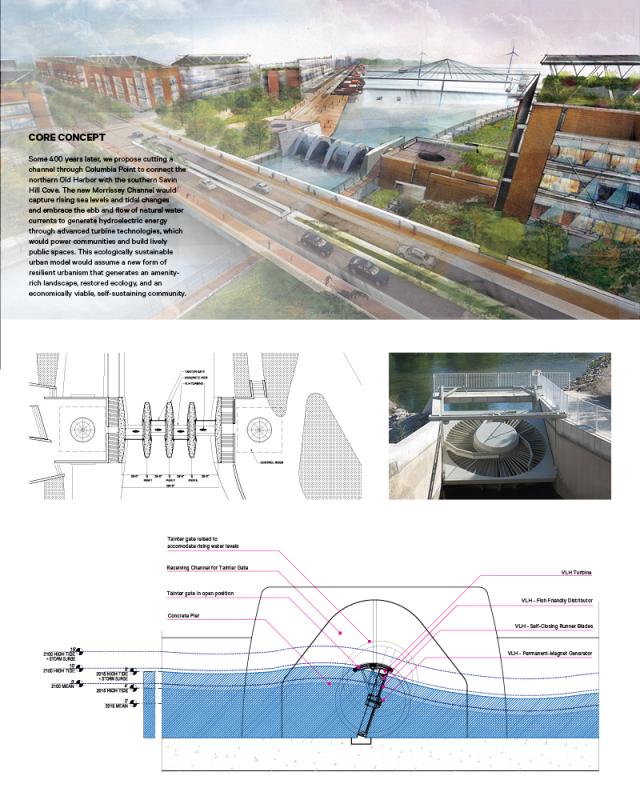The Hydroelectric Canal
Abstract We propose to harness clean energy through hydropower generation from tidal changes and storm surges in low-lying urban areas as a means of shaping economically and environmentally resilient, self-sustaining communities. Our proposal offers an array of integrated landscaping, ecological restoration, urban development and financing strategies for achieving this goal. The latter include public-private partnerships for creating a new energy-producing, amenity-laden infrastructure that reduces risk to communities and investors. Core Concept We propose cutting a channel through Columbia Point to connect the northern Old Harbor with the southern Savin Hill Cove. The new Morrissey Channel would capture rising sea levels and tidal changes and embrace the ebb/flow of natural water currents to generate hydroelectric energy through advanced turbine technologies, which would power communities and build lively public spaces. This ecologically sustainable urban model would assume a new form of resilient urbanism that generates an amenity-rich landscape, restored ecology, and an economically viable, self-sustaining community. Design Process We assembled a team of landscape architects, ecologists, engineers, venture capitalists, economists, cost estimators, and leading entrepreneurs and scientists advancing turbine technologies for river and ocean applications. Our three months of iterative design exploration included identification of market-ready turbines amenable to Columbia Point’s ecology and landscape.
![[Paul Lukez Architecture - The Hydroelectric Canal - COVER IMG]](https://architectureprizecom.s3-us-west-2.amazonaws.com/uploads/90246/large_MXd9qR3SUn0c.jpg)



